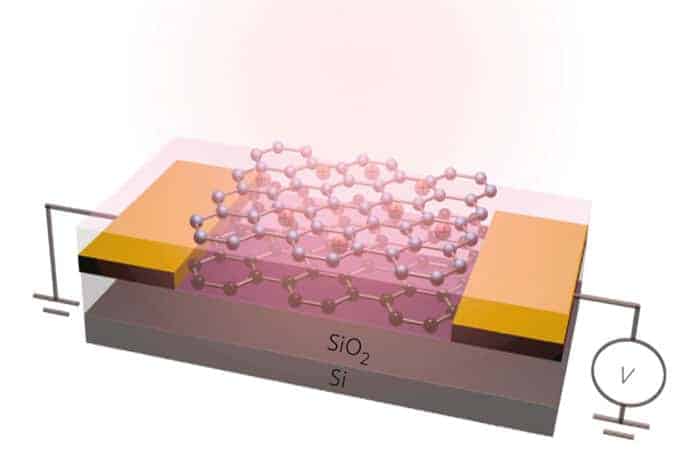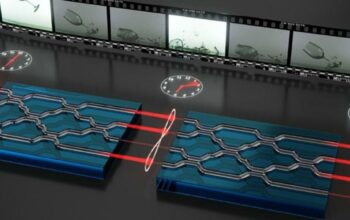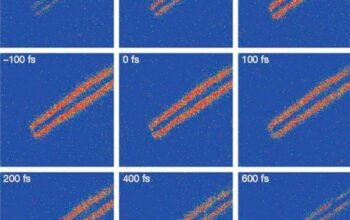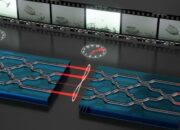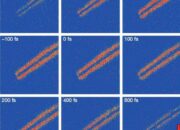Graphene, a one-atom-thick allotrope of carbon, has put scientists in a constant state of intrigue since its isolation in 2004. Known for its remarkable conductivity and mechanical strength, graphene’s latest foray into the realm of thermal vision provides a captivating discourse on its multifaceted properties and potential applications. The intersection of graphene and thermal imaging unveils not merely a technological advance but hints at fundamental questions regarding material science, optical phenomena, and the future of imaging technologies.
The study of thermal vision—essentially, the capability to visualize infrared radiation—is pivotal in numerous fields, from nocturnal surveillance to biomedical diagnostics. Traditional thermal imaging employs materials that detect infrared radiation, which is advantageous for temperature mapping and heat detection. However, these conventional materials often exhibit limitations in resolution and sensitivity. Herein lies the allure of graphene; its unique electronic properties render it not only an excellent conductor of heat but also a promising candidate for thermal detection applications. When sculpted into the appropriate configurations, graphene is capable of absorbing infrared radiation in exceptional ways, effectively translating heat profiles into visual imagery.
At the atomic level, graphene’s structure provides a lattice of carbon atoms arranged in a two-dimensional honeycomb form. This configuration endows it with extraordinary surface area and unparalleled electronic mobility. Consequently, when subjected to infrared radiation, graphene exhibits a remarkable ability to generate a photothermal effect, meaning it can convert absorbed infrared light into heat and thereby exhibit changes in resistance that can be detected and converted into visual signals. This photothermal transduction mechanism is crucial for developing advanced thermal imaging systems that promise enhanced sensitivity and resolution.
Moreover, the ability of graphene to function as a thermal sensor raises questions about the broader implications of its use, pushing the boundaries of material science. The phenomenon of thermoelectric effects in graphene is intricately tied to its electronic properties. Thermoelectric materials can turn a temperature difference into electrical power, thereby integrating thermal management and energy harvesting capabilities. This duality renders graphene not just a sensor but potentially a generator of energy, signifying profound implications for fields such as wearable technology and smart textiles.
Furthermore, the adaptation of graphene in thermal vision applications finds resonance in various practical contexts. In the burgeoning field of medicine, for instance, graphene-infused thermal sensors may allow for non-invasive monitoring of human body temperatures, facilitating early detection of fever or other pathological conditions. This development is particularly salient in remote or resource-limited settings where traditional medical infrastructure is scarce.
In the realm of industry, graphene’s implementation in thermal imaging can enhance the detection of heat losses in buildings or machinery. This capability can lead to significant energy savings and efficiency improvements—a critical concern in today’s landscape of heightened environmental awareness and energy conservation initiatives. The marriage of graphene with thermal imaging also raises possibilities for applications in electronics, where overheating components can be identified quickly, mitigating risks of failure and enhancing longevity.
While emerging research spotlights graphene’s promising role in thermal vision technology, it simultaneously reveals avenues for further exploration and development. The creation of a viable thermal imaging device necessitates extensive research into the scalability of graphene production and its integration into existing imaging systems. The synthesis of high-quality graphene remains a considerable challenge as various techniques exist—such as chemical vapor deposition and liquid-phase exfoliation—each with distinct advantages and disadvantages. The reproducibility of such synthesis techniques is paramount for commercial viability.
Moreover, as with any innovatory material, the environmental impact of graphene production and disposal warrants thorough consideration. The continuous evolution of graphene applications must be mirrored by assessments of sustainability, ensuring that advancements do not come at an ecological cost. The cradle-to-grave implications of using graphene must be examined to gauge its long-term feasibility as a material of choice in thermal imaging and beyond.
Lastly, the temporal context of these advances cannot be overlooked: as society grapples with climate change, health crises, and the aspirations for smart technology, graphene’s evolution embodies a convergence of material science and societal need. The marriage of two-dimensional materials and thermal vision serves as a testament to human ingenuity and the relentless pursuit of knowledge. This innovation resonates particularly in an era wherein immediate access to thermal data could prove invaluable—be it for disaster response, resource management, or health monitoring.
Graphene’s burgeoning capabilities, particularly in thermal vision, encapsulate a narrative much larger than the material itself. It is a narrative animated by curiosity, innovation, and the inexorable drive for progress. As scientific inquiry continues to unravel the complexities of this remarkable material, one can envision a future wherein graphene-based technologies redefine how we perceive and interact with the thermal landscapes that envelop us. The intricate dance of atoms and the captivating interplay of infrared visualization sketch a future wherein the unseen becomes seen, ushering in an era rife with possibilities.
